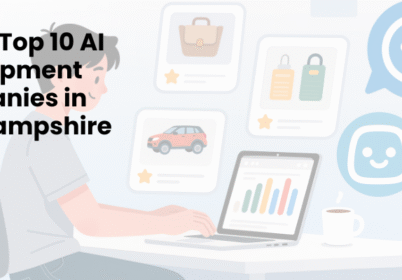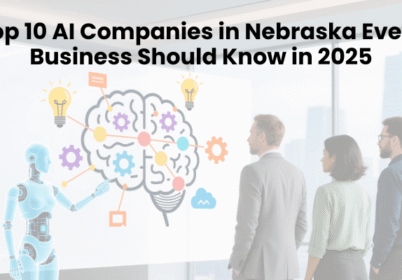Best Vibe Coding Tools for Professionals: Transforming Ideas into Code with AI

Table of Contents
Are you tired of wrestling with complex syntax when all you want is to bring your ideas to life? Picture this: you have a brilliant app concept, but the thought of writing thousands of lines of code makes you want to give up before you even start. What if I told you that the world of software development has fundamentally changed, and you can now build applications by simply describing what you want them to do?
Welcome to the era of vibe coding, where artificial intelligence transforms your natural language descriptions into functional code. These revolutionary tools are reshaping how we approach software development, making it accessible to everyone from seasoned developers to complete beginners. You no longer need to memorize countless programming languages or spend months learning syntax rules.
The best vibe coding tools combine the power of large language models with intuitive interfaces that understand your intent. Whether you are a startup founder with limited technical skills or a professional developer looking to accelerate your workflow, these platforms can dramatically change how you build software.
Key Takeaways
- Readers will understand how vibe coding tools use AI to transform natural language into functional software, revolutionizing modern development.
- Discover how these tools accelerate development speed by turning plain English descriptions into production-ready applications.
- Explore the top platforms like Cursor AI, Bolt.new, V0, and Lovable.dev, and how each excels in specific coding needs.
- Learn how to evaluate vibe coding tools through real-world testing—covering code quality, collaboration, scalability, and cost-efficiency.
- Identify the key benefits such as reduced coding time, enhanced creativity, and improved focus on solving business problems.
- Gain practical strategies to choose and use the right vibe coding platform effectively—starting small, iterating fast, and mastering prompt-based coding.
Table of Contents
What Is a Vibe Coding Tool?
Have you ever wished you could tell a computer exactly what you want it to build using plain English? That is precisely what vibe coding tools accomplish. These AI-powered platforms allow you to create software applications, websites, and prototypes by describing your vision in natural language rather than writing traditional code.
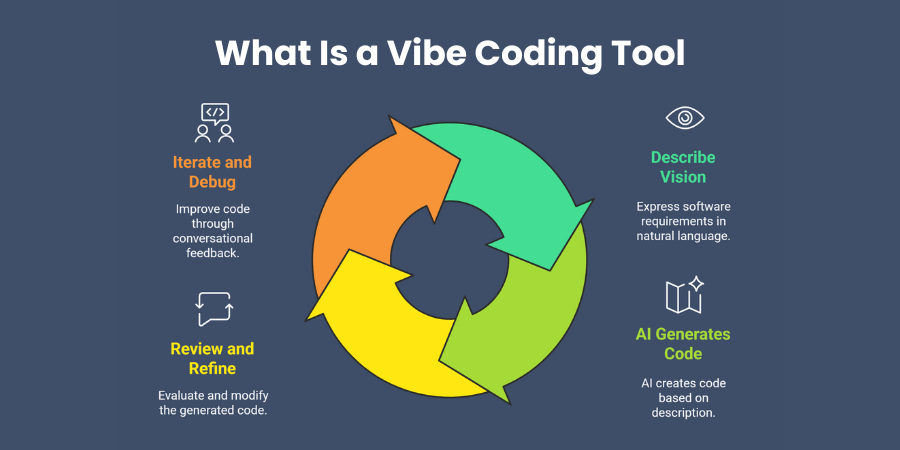
Think of vibe coding as having a conversation with an incredibly skilled developer who instantly understands your requirements. You describe the functionality you need, the user interface you envision, or the problem you want to solve, and the AI generates the corresponding code automatically. This approach represents a fundamental shift from the traditional “how to code” mentality to a “what to build” philosophy.
The technology behind these tools combines natural language processing, generative artificial intelligence, and sophisticated code generation algorithms. When you input a description like “create a todo app with dark mode and user authentication,” the AI understands the components needed and generates the appropriate HTML, CSS, JavaScript, and backend logic.
What makes these tools particularly powerful is their ability to iterate based on your feedback. You can refine your requests, ask for modifications, and even debug issues using conversational language. This creates a collaborative development experience that feels more like working with a partner than fighting with a compiler.
Common Use Cases of a Vibe Coding Tool
Wondering how vibe coding tools fit into real-world scenarios? Let me walk you through the most compelling applications that professionals are using today.
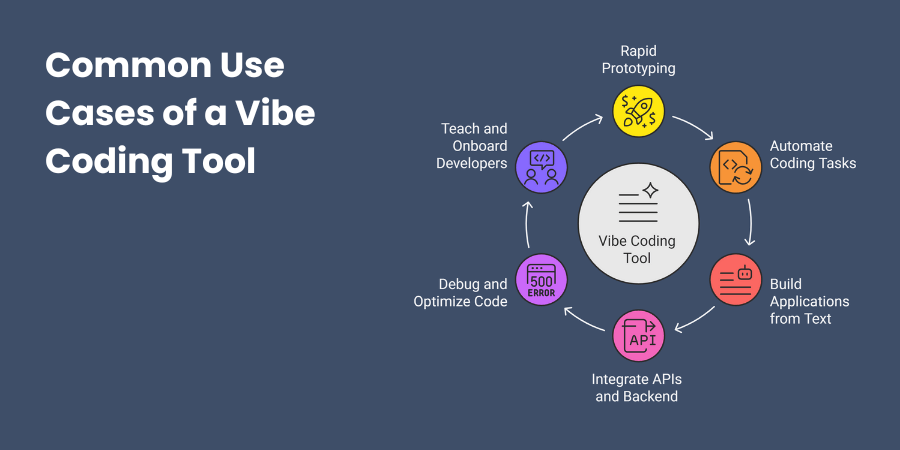
Rapid Prototyping for Startups and Product Teams
Are you working in a fast-paced startup environment where speed matters more than perfect code? Vibe coding tools excel at creating functional prototypes within hours instead of weeks. You can validate your product ideas, demonstrate concepts to investors, and gather user feedback without investing significant development resources.
Automating Repetitive Coding Tasks
Every developer knows the frustration of writing boilerplate code repeatedly. These tools can generate standard components, API integrations, database schemas, and authentication systems based on simple descriptions. You save countless hours on mundane tasks and focus on solving unique business problems.
Building Web and Mobile Applications from Text Prompts
Imagine describing your dream application and watching it come to life before your eyes. Modern vibe coding platforms can create complete web applications, mobile interfaces, and even backend services from detailed natural language descriptions. You provide the vision, and the AI handles the implementation details.
Integrating APIs and Backend Logic Quickly
Struggling with complex API documentation or backend architecture? You can describe the data flow you need, specify the endpoints required, and let the AI generate the integration code. This approach dramatically reduces the learning curve for new technologies and frameworks.
Debugging and Optimizing Existing Code
When you encounter errors or performance issues, you can describe the problem in plain English and receive targeted solutions. The AI can analyze your existing code, identify bottlenecks, and suggest optimizations without requiring deep technical expertise.
Teaching and Onboarding New Developers
Are you mentoring junior developers or transitioning from another field? Vibe coding tools serve as excellent learning companions, explaining concepts through practical examples and generating code that demonstrates best practices.
What Features Make an AI Coding Assistant Stand Out?
What should you look for when evaluating the best vibe coding tools? The market is flooded with options, but certain features separate exceptional platforms from mediocre ones.
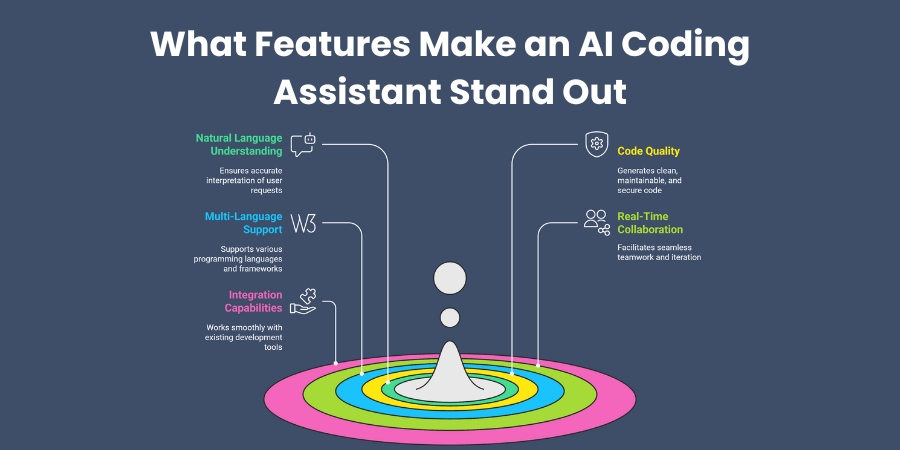
Natural Language Understanding Quality
The most crucial factor is how well the tool interprets your descriptions. Top-tier platforms understand context, handle ambiguous requests gracefully, and ask clarifying questions when needed. You want a tool that gets your intent right the first time, not one that requires multiple iterations to produce usable results.
Code Quality and Best Practices
Does the generated code follow industry standards and security best practices? The best tools produce clean, maintainable code that you would be proud to deploy in production. They include proper error handling, follow naming conventions, and implement security measures automatically.
Multi-Language and Framework Support
Your ideal tool should support the technologies you actually use. Whether you prefer React, Vue, Python, or any other stack, the platform should generate idiomatic code for your chosen technologies without forcing you to adapt to its limitations.
Real-Time Collaboration and Iteration
Can you refine and modify the generated code through continued conversation? The most effective tools allow you to request changes, fix bugs, and add features using natural language, creating a seamless development workflow.
Integration Capabilities
How well does the tool integrate with your existing development environment? Look for platforms that work with popular IDEs, version control systems, and deployment pipelines without disrupting your established workflow.
How We Evaluate and Test No-Code Platforms at Shadhin Lab
You might be wondering how we determine which tools deserve the best vibe coding tools designation. Our evaluation process combines rigorous testing with real-world application scenarios to ensure our recommendations serve your actual needs.
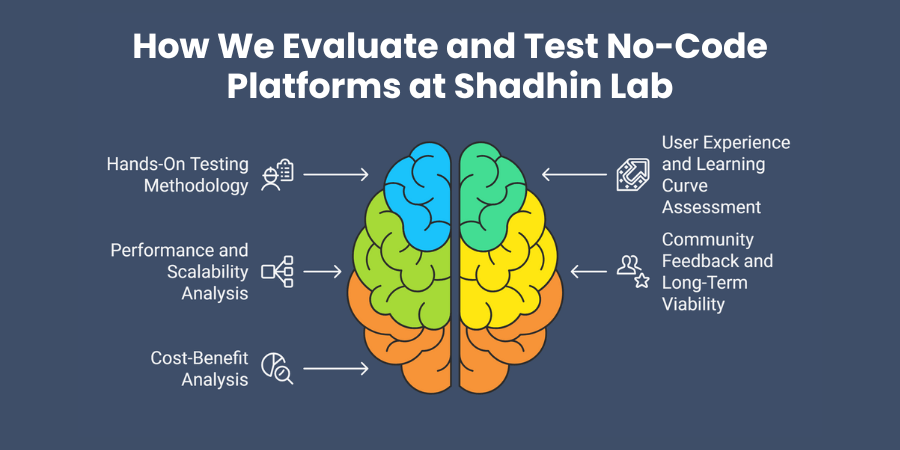
Hands-On Testing Methodology
We build identical projects across multiple platforms using consistent prompts and requirements. This approach allows us to compare code quality, development speed, and user experience objectively. Each tool receives the same challenges, from simple landing pages to complex applications with authentication and database integration.
User Experience and Learning Curve Assessment
How quickly can you become productive with each platform? We measure the time required to complete common tasks, evaluate the quality of documentation, and assess how intuitive the interface feels for both beginners and experienced developers.
Performance and Scalability Analysis
We test the generated code under realistic conditions, measuring load times, resource usage, and scalability potential. You need tools that create applications capable of handling real user traffic, not just impressive demos.
Community Feedback and Long-Term Viability
What are other professionals saying about their experiences? We analyze user reviews, community discussions, and case studies to understand how these tools perform in diverse real-world scenarios over extended periods.
Cost-Benefit Analysis
We evaluate pricing models against the value delivered, considering factors like usage limits, feature restrictions, and total cost of ownership for teams of different sizes.
Best Vibe Coding Tools
Now for the moment you have been waiting for – which platforms actually deliver on the promise of effortless coding? Here are the standout tools that consistently impress in our testing.
| Tool | Best For | Key Strength | Pricing Model |
| Cursor AI | Professional developers | IDE integration | Subscription |
| Bolt.new | Quick prototypes | Speed and simplicity | Usage-based |
| Claude Artifacts | Interactive demos | Conversational refinement | Token-based |
| V0 by Vercel | React components | Component library | Free tier available |
| Lovable.dev | Full-stack apps | End-to-end development | Project-based |
1. Cursor AI
Are you a professional developer who wants AI assistance without abandoning your favorite IDE? Cursor AI transforms Visual Studio Code into an intelligent coding partner. You can highlight code sections and describe changes in natural language, making it perfect for enhancing existing projects rather than starting from scratch.
Key features include real-time code suggestions, natural language editing commands, and seamless integration with your existing workflow. The tool excels at understanding context from your entire codebase, providing suggestions that align with your project’s architecture and coding style.
2. Bolt.new
Need to create a functional prototype in minutes rather than hours? Bolt.new specializes in rapid application development with an incredibly intuitive interface. You describe your application requirements, and within moments, you have a working prototype complete with modern styling and basic functionality.
This platform shines for non-technical founders, product managers, and anyone who needs to validate ideas quickly. The generated applications are surprisingly polished and can serve as excellent starting points for more complex development.
3. Claude Artifacts
Do you prefer a conversational approach to development? Claude Artifacts allows you to build and refine applications through natural dialogue. You can request changes, add features, and fix issues by simply describing what you want, creating an iterative development experience that feels remarkably natural.
The platform excels at creating interactive demos, educational content, and proof-of-concept applications. Its strength lies in understanding nuanced requests and maintaining context throughout long development sessions.
4. V0 by Vercel
Are you building React applications and need high-quality components quickly? V0 generates production-ready React components based on your descriptions, complete with modern styling and responsive design. The tool integrates seamlessly with Next.js and other Vercel ecosystem tools.
What sets V0 apart is its focus on component-level development rather than entire applications. You can generate specific UI elements, combine them into larger interfaces, and export clean code that integrates perfectly with existing React projects.
5. Lovable.dev
Looking for a platform that handles everything from frontend to backend? Lovable.dev creates complete full-stack applications including user authentication, database integration, and deployment configuration. You describe your application requirements, and the platform generates a comprehensive solution ready for production use.
This tool is ideal for entrepreneurs and small teams who need complete applications without managing multiple development tools and services.
Benefits of Vibe Coding Tools
What can you expect when you incorporate these tools into your development workflow? The advantages extend far beyond simple time savings.
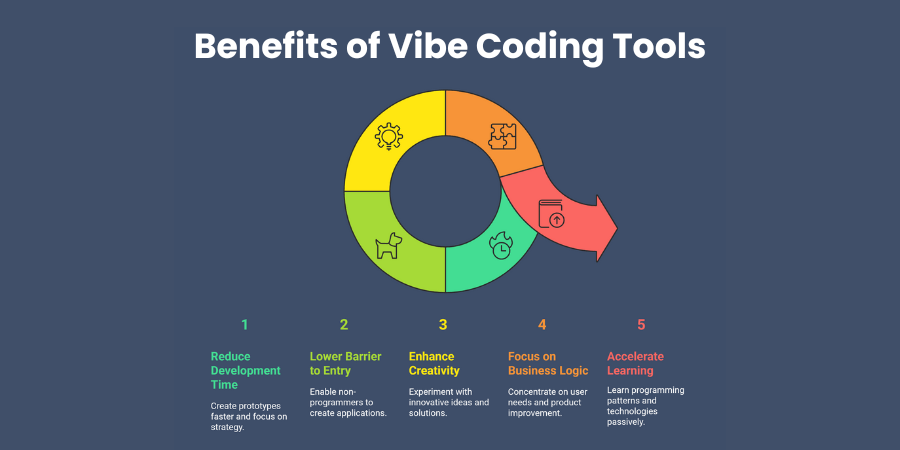
Dramatically Reduced Development Time
You can create functional prototypes in hours instead of weeks. Tasks that previously required days of coding can be completed in minutes, allowing you to focus on strategy and user experience rather than implementation details.
Lower Barrier to Entry
Have you avoided certain projects because they seemed too technically complex? Vibe coding tools democratize software development, enabling anyone with clear ideas to create functional applications regardless of their programming background.
Enhanced Creativity and Experimentation
When coding becomes effortless, you can afford to experiment with wild ideas and innovative approaches. The reduced cost of failure encourages creative risk-taking that leads to breakthrough solutions.
Improved Focus on Business Logic
Instead of wrestling with syntax and framework documentation, you can concentrate on solving real problems for your users. This shift in focus often results in better products that address genuine needs more effectively.
Accelerated Learning and Skill Development
By observing how AI translates your requirements into code, you naturally learn programming patterns, best practices, and new technologies. This passive learning accelerates your development skills without formal study.
Limitations of Vibe Coding
Before you dive headfirst into vibe coding, what challenges should you anticipate? Understanding these limitations helps you set realistic expectations and choose appropriate use cases.
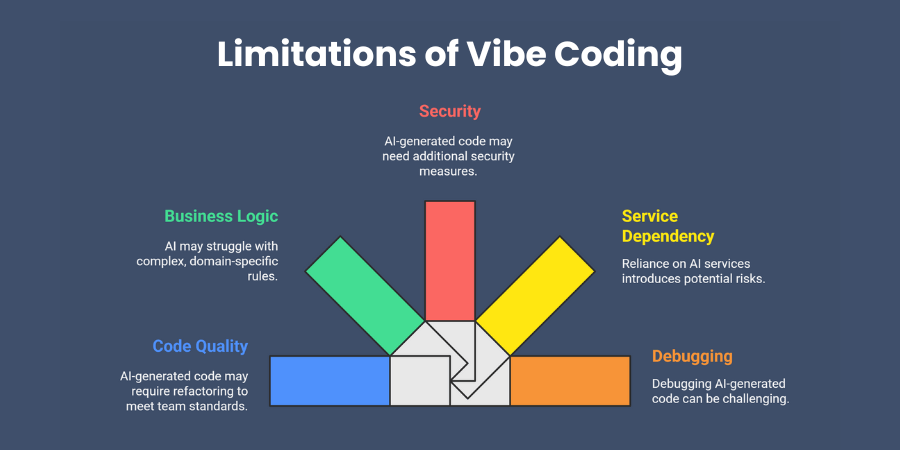
Code Quality and Maintainability Concerns
While AI-generated code often works correctly, it may not always follow the specific patterns and conventions your team prefers. You might need to refactor generated code to match your standards, especially for long-term projects.
Limited Understanding of Complex Business Logic
Can these tools handle intricate business rules and domain-specific requirements? Current AI models excel at common patterns but may struggle with highly specialized logic that requires deep domain expertise.
Security and Compliance Considerations
Generated code may not automatically include all necessary security measures or compliance requirements for your industry. You must review and enhance the code to meet your specific security standards.
Dependency on AI Service Availability
What happens when the AI service experiences downtime or changes its pricing model? Your development workflow becomes dependent on external services, which introduces potential points of failure.
Debugging and Troubleshooting Challenges
When generated code contains bugs or behaves unexpectedly, debugging can be more challenging than with hand-written code. You may need to understand code you did not write to identify and fix issues.
Tips for More Effective Vibe Coding
How can you maximize your success with these powerful tools? These strategies will help you achieve better results and avoid common pitfalls.
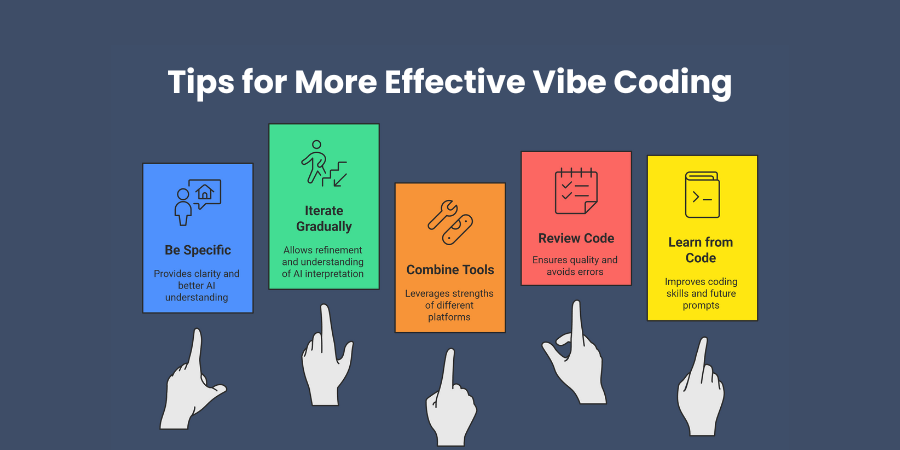
Be Specific and Detailed in Your Descriptions
Vague requests produce mediocre results. Instead of saying “create a user dashboard,” specify the exact features, layout preferences, and functionality you need. The more context you provide, the better the AI can understand your vision.
Start Small and Iterate Gradually
Begin with simple components or features before attempting complex applications. This approach helps you understand how your chosen tool interprets requests and allows you to refine your communication style.
Combine Multiple Tools for Different Strengths
Why limit yourself to a single platform? Use different tools for their specific strengths – one for rapid prototyping, another for production-quality components, and a third for backend logic.
Always Review and Test Generated Code
Never deploy AI-generated code without thorough testing. Review the logic, test edge cases, and ensure the code meets your quality standards before using it in production environments.
Learn from the Generated Code
Study how the AI solves problems and implements features. This observation helps you improve your own coding skills and write better prompts for future projects.
How to Choose the Right Vibe Coding Platform
With so many options available, how do you select the tool that best fits your needs? This decision framework will guide you toward the optimal choice.
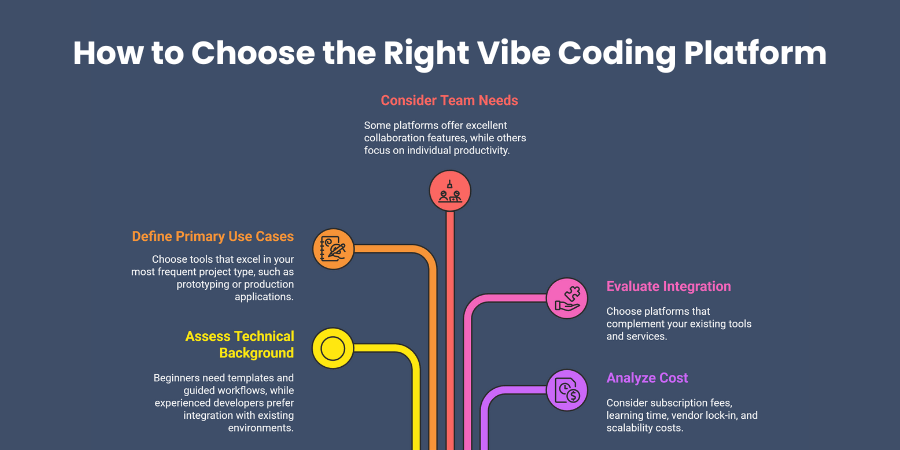
Assess Your Technical Background
Are you a complete beginner or an experienced developer? Beginners benefit from tools with extensive templates and guided workflows, while experienced developers may prefer platforms that integrate with existing development environments.
Define Your Primary Use Cases
What types of projects will you build most frequently? Choose tools that excel in your primary domain, whether that is rapid prototyping, production applications, or educational content.
Consider Your Team and Collaboration Needs
Will you work alone or with a team? Some platforms offer excellent collaboration features, while others focus on individual productivity. Factor in your team size and workflow requirements.
Evaluate Integration Requirements
How important is integration with your existing tools and services? If you have established development workflows, choose platforms that complement rather than replace your current setup.
Analyze Total Cost of Ownership
Beyond subscription fees, consider the time investment required to learn each platform, potential vendor lock-in, and long-term scalability costs.
Conclusion
You are witnessing a fundamental transformation in how software gets built. The best vibe coding tools are not just making development faster – they are making it accessible to anyone with ideas worth building. Whether you are a seasoned professional looking to accelerate your workflow or a newcomer ready to bring your vision to life, these platforms offer unprecedented opportunities.
The key to success lies in choosing the right tool for your specific needs and learning to communicate effectively with AI. Start with simple projects, experiment with different platforms, and gradually tackle more complex challenges as you build confidence.
What will you create first? The barriers between imagination and implementation have never been lower. Your next breakthrough application might be just a conversation away.
Frequently Asked Questions
Are vibe coding tools suitable for production applications?
Yes, many vibe coding tools can generate production-ready code, but you should always review, test, and potentially refactor the output before deployment. The code quality varies by platform and complexity of your requirements.
Do I need programming knowledge to use these tools effectively?
While programming knowledge is not strictly required, having some technical understanding helps you write better prompts and evaluate the generated code quality. You can start as a complete beginner and learn as you go.
How much do the best vibe coding tools typically cost?
Pricing varies significantly, from free tiers with limited usage to enterprise plans costing hundreds of dollars monthly. Most platforms offer usage-based pricing or subscription models starting around twenty to fifty dollars per month.
Can vibe coding tools replace traditional programming entirely?
Not yet. While these tools excel at common patterns and standard applications, complex business logic, performance optimization, and specialized requirements often still require traditional programming skills.
What happens to my code if the AI service shuts down?
Most platforms allow you to export your generated code, ensuring you retain ownership and can continue development independently. Always verify export capabilities before committing to any platform for important projects.
Shaif Azad
Related Post
Top 10 AI Development Companies in New Jersey for Business
Are you searching for the perfect AI development partner in New Jersey? Have you wondered which...
Top 10 AI Development Companies in New Hampshire
Are you watching New Hampshire’s tech landscape transform before your eyes? Your state is quietly becoming...
Top AI Companies in Nebraska Every Business Should Know
Are you a Nebraska business owner wondering how artificial intelligence could transform your operations? Picture this...


